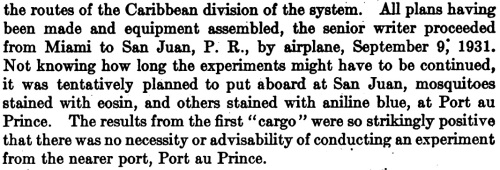Confusing movie science: S+H+E (1980)
She. A title familiar to millions, from H. Rider Haggard’s 1887 adventure novel that’s had a half-dozen film adaptations, giving actresses like Helen Gahagan and Ursula Andress a chance to be statuesque and intimidating as the titular 2,000-year-old sorceress worshiped by remote tribesmen.
This is not one of those films. Having bought it along with other 1980s VHS tapes, I expected the 1982 adaptation of Haggard’s novel starring Sandahl Bergman of Conan the Barbarian and Hell Comes to Frogtown fame. Instead, it’s the acronymic S+H+E: Security Hazards Expert, which aired on CBS in February 1980. Filmed on location in “Italy and Berlin”, this was an ambitious attempted pilot for a Charlie’s Angels-esque series about a female secret agent played by Cornelia Sharpe, wife of producer Martin Bregman.
She is as effective as you could hope for as a “Diana Rigg type”. The whole movie is entertaining, despite the random elements that only make sense if there are subsequent episodes (like her Italian boyfriend who wants her to retire and settle down) and the soundtrack consisting of the same song over the opening credits, closing credits, every montage, and every action sequence. Adding to the enjoyment was the single trailer that preceded the movie, for another CBS TV movie starring Dyan Cannon as a madam who was elected mayor of Sausalito, California.
* * *
The last thing I expected from this movie was microbiological blog fodder. But after hearing the characters talk about the science that underlies the plot, I had to stop and figure out exactly why it didn’t make sense.
* * *
First, we’re introduced to the wine scientists. The whole movie is on YouTube as of today; start around the 23-minute mark for this conversation. Charming wine magnate Cesare Magnasco (Omar Sharif) is showing our heroine Lavinia Kean around his sinister winery. Frau Doktor Biebling is played by sixties icon Anita Ekberg, in what I believe was her last English-language role.
- Cesare: Miss Blake, this is our distinguished oenologist, Frau Doktor Biebling.
- Lavinia: How do you do?
- Biebling: (silence)
- Cesare: Dr. Biebling is a genius. A Nobel Prize nominee in parasitology from the University of Heidelberg. Doctor, tell Miss Blake what we do here.
- Biebling: We are approaching a very critical phase in our latest experiment, Barone. It requires concentration and my closest attention.
- Cesare: Per favore. For her American readers. To make them drink more Magnasco!
- Biebling: Our chief concern is to protect the vines. Particularly from a genus of insects of the family Phylloxera.
- Lavinia: Which of the 32 known species do you specialize in?
- Biebling: (silence)
- Cesare: They destroyed millions of acres of grapes when first brought to Europe.
- Biebling: (withering stare) From America.
- Lavinia: (smirking) I’m terribly sorry! I won’t disturb you any longer.
- As they leave Biebling’s lab, Magnasco points to two Petri dishes, saying “Experimental cultures”. Another scientist asks Biebling mockingly, “Why don’t you develop an anti-jealousy microbe?”
The issue here is the word “parasitology”. Although the Phylloxera family of aphids do act as parasites to grapevines, someone who studies them would be an entomologist. Parasitology generally refers to parasites of animals — especially worms or microscopic eukaryotes like malaria, Toxoplasma or Giardia. Wikipedia claims it also refers to organisms like fleas and lice, but even this only extends to parasites of animals, not plants.
It’s possible that instead of being an expert on aphids, she is an expert on microscopic parasites of aphids. This hypothesis is supported by the “experimental cultures”, which look like bacterial broth. However, I don’t think there are any such microbes, whether eukaryotic or bacterial. There are methods of aphid control using aphid parasites… but those parasites are tiny wasps. So either way, she’d be an entomologist!
Finally, calling someone a “Nobel Prize nominee in parasitology” sort of implies that there is a Nobel Prize in Parasitology, which there isn’t. And although it is prestigious to be nominated for a Nobel Prize, it’s not quite like the Academy Awards. The 2014 Nobel Prize in Physiology of Medicine had 263 nominees.
* * *
But this is mere pedantry. The really confounding exchange is near the end, around minute 73. By now, the good guys have learned that Magnasco & Co. are holding the world’s petroleum supply hostage with something called “A.P.M.” Lavinia Kean, and her assistant/minder/colleauge Lacey (basically Bosley from Charlie’s Angels), have snuck into Frau Doktor Biebling’s laboratory again. They snoop around, and when they’re discovered, Lavinia injects Biebling with some sort of sedative, injected via flying mechanical bug.
- Biebling: You again!
- Lavinia: Do unto others… darling.
- Biebling: I should have put you to sleep permanently. (passes out)
- Lacey: (points to page of notes) “Anti-Petroleum Microbe”?
- Both together: A.P.M.!
- (she smears the orange liquid from one of the cultures on a slide, and they look at it under a microscope. Wriggling animalcules are seen through the lens)
- Lavinia: There it is. A simple amoeba-type microbe found in tide pools. Elsa’s a parasitologist, but she wasn’t working on Phylloxera. She was developing A.P.M.
- Lacey: I’m lost.
- Lavinia: She fed and refined the algae with special nutrients. Now it’s a virulent strain that devours petroleum.
- Lacey: I’m still lost.
- Lavinia: When A.P.M. is mixed with petroleum it multiplies like crazy. Gasoline is refined petroleum.
- She goes on to demonstrate how gasoline is flammable, but when mixed with A.P.M. it goes all foamy and inert.
This makes it clear that Frau Doktor Biebling is an expert on microbes, not so much on aphids.
Her work for Magnasco has been a matter of encouraging a certain microbe to grow on different substrates, akin to the classic experiments in microbial evolution where bacteria start to thrive on some molecule that used to poison them. With “A.P.M.”, they have made a microbe which “devours petroleum”, rendering it a foamy mass of uselessness. The notion of microbes engineered to eat hydrocarbons has been invoked for decades, generally as a good thing (cleaning up oil spills). Here it’s presented as a sort of plague, which if it ever enters a pipeline will spread and spread until it consumes our entire inexorably interconnected petroleum supply.

In a column from the 1980s, Dave Barry sees petroleum-eating microbes as neither plague nor panacea.
One problem here is that the new, oil-eating microbe is described as a “virulent strain”. That’s not what “virulent” means. A virulent strain would be one that is particularly harmful or deadly to the organism it infects. A.P.M., though scary, isn’t infecting anything — it’s just consuming certain nutrients.
And then there’s that word “parasitologist” again.
It seems that in the world of this movie, vines are protected against aphids by spraying them with an infectious agent that kills the bugs. So she could be a “parasitologist”, if the infectious agent is eukaryotic rather than bacterial.
And indeed, it’s described as “a simple amoeba-type microbe”. Judge for yourself if that view through the microscope shows an amoeba-type microbe. What are some other possibilities? They appear filamentous, but not rigid enough to be filamentous bacteria, and I don’t see the branching that would indicate fungal hyphae. Maybe they are fragments of some larger structure. Could these be strands of filamentous algae, but photographed in a way that washes out the color?
Yes! In addition to being an amoeba, A.P.M. is described as “algae”. It normally lives in tidal pools, but has been acclimated to life in petroleum. And here I admit a misconception of my own: I thought algae would be a poor choice for evil scientists seeking speedy evolution of new abilities, compared to bacteria. But this might not be the case – Bradley Olson’s evolutionary biology lab at Kansas State, for example, uses algae as a model organism.
The question now has to be asked: Does Frau Doktor Biebling do any work at all related to grapevines? What did she promise to do in her grant proposals?
* * *
To read about a real-life salt-loving microbe that eats oil slicks, go to the MicrobeWiki entry on Alcanivorax.
To learn more about colorless algae that are also amoebae, infectious parasites of oil and studied by entomological oenologists, watch S+H+E.
Follow Amboceptor on Twitter: @AmboceptorBlog




















